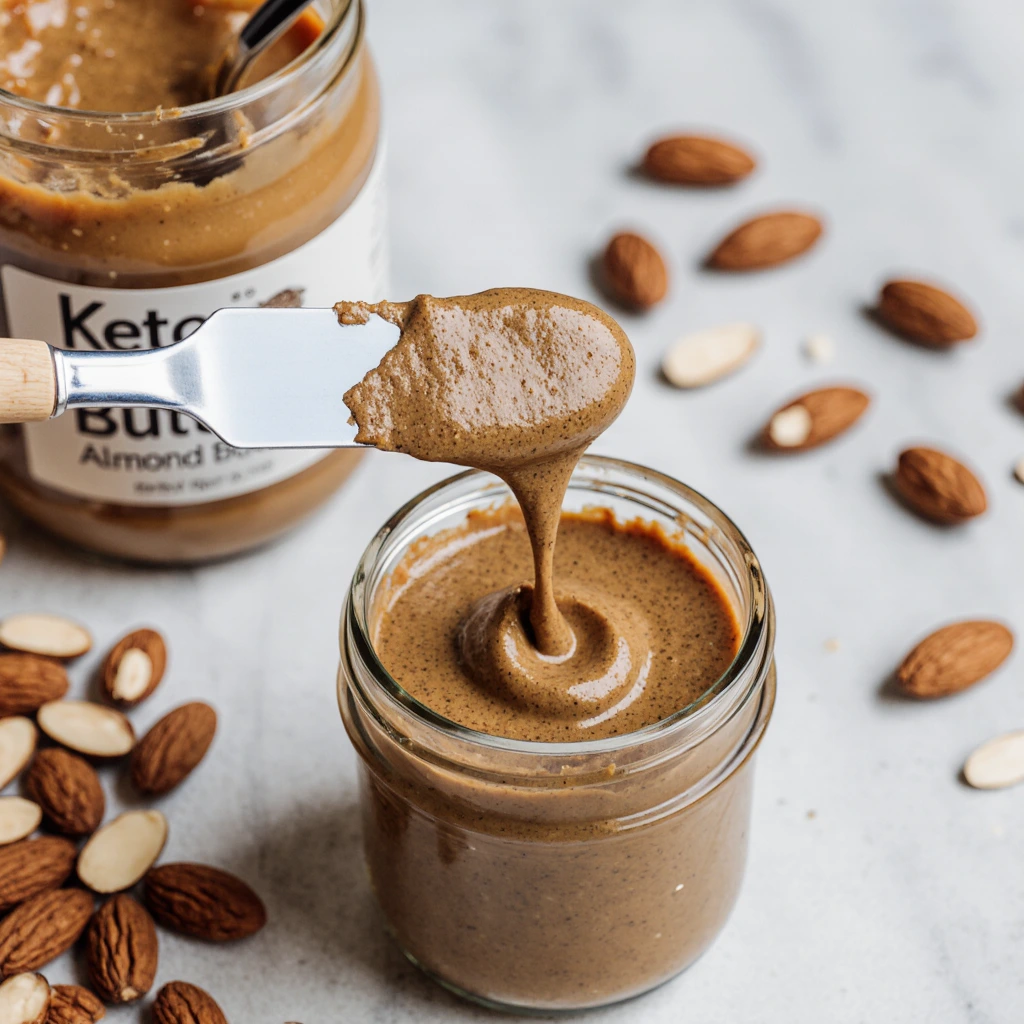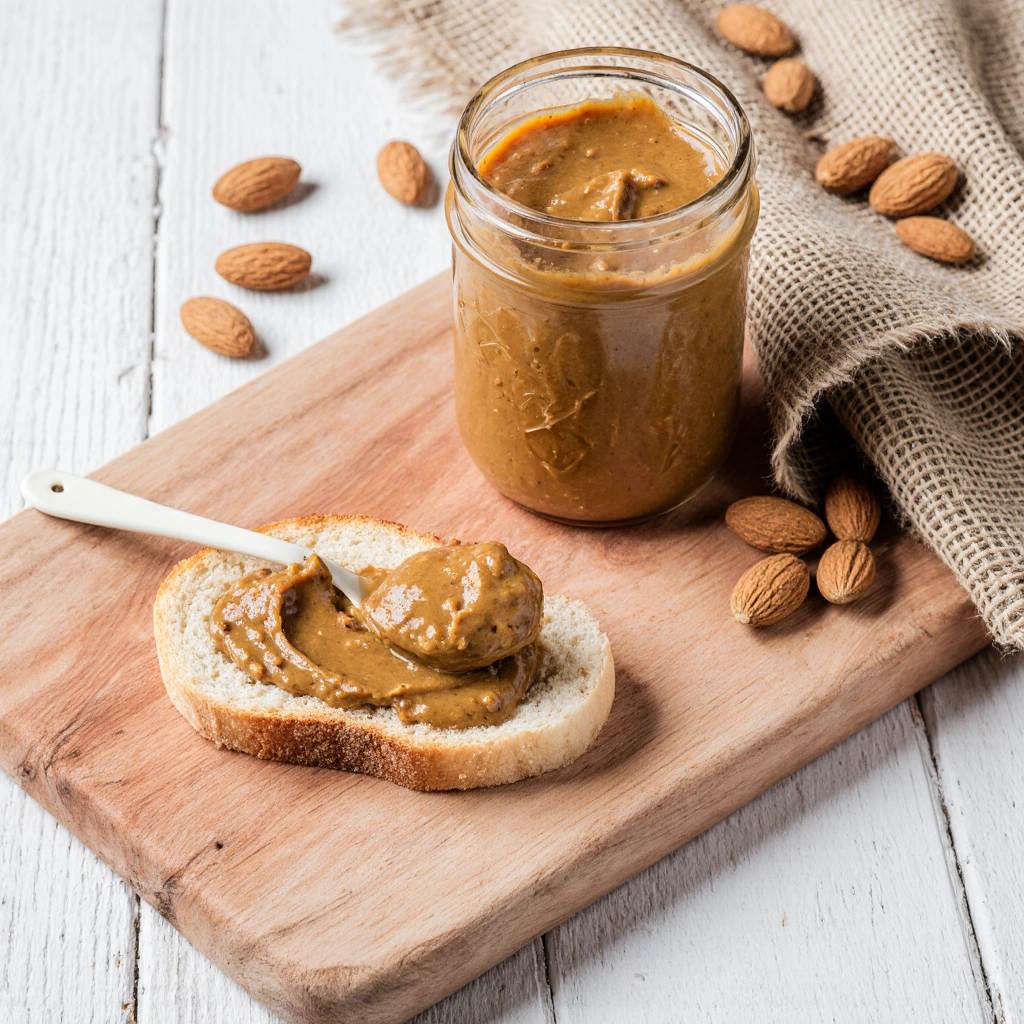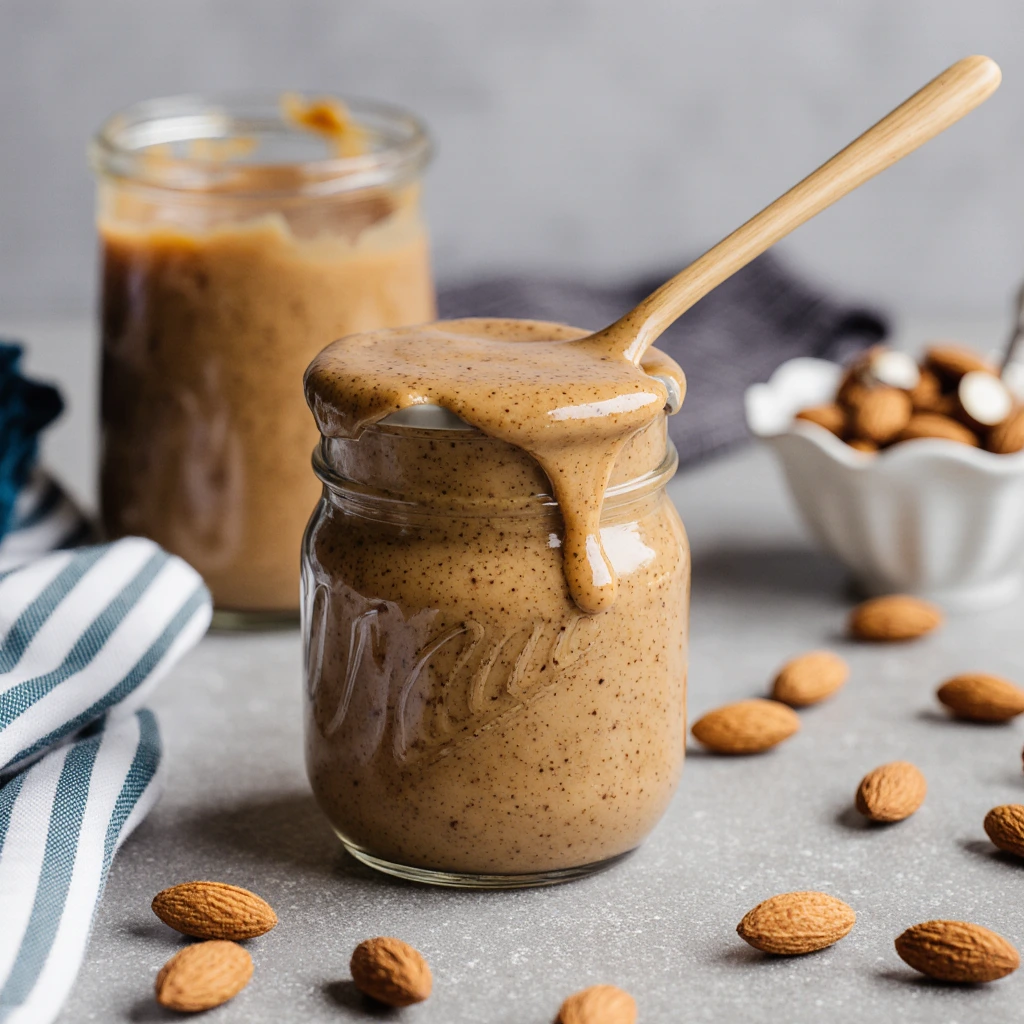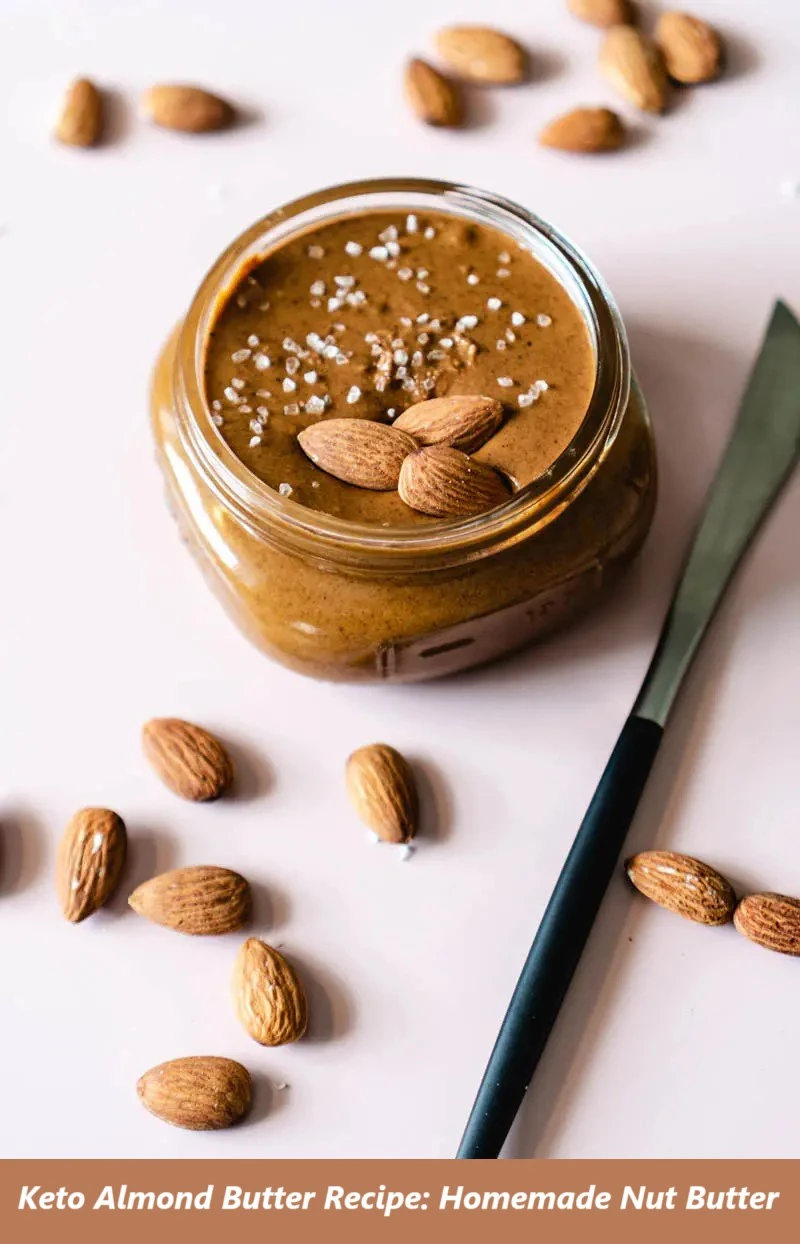How to Make Keto Almond Butter at Home
Table of Contents
Introduction
Did you know that 78% of commercial almond butters contain added sugars and preservatives that can derail your ketogenic diet goals? This startling statistic challenges the common belief that all nut butters are created equal. When following a low-carb lifestyle, finding the perfect spread that aligns with your macronutrient requirements becomes crucial for maintaining ketosis and achieving your health objectives.
Creating your own keto almond butter at home eliminates these concerns entirely while providing you with complete control over ingredients, texture, and flavor profiles. This homemade keto almond butter contains zero added sugars, artificial preservatives, or inflammatory oils commonly found in store-bought alternatives. The result is a nutrient-dense, creamy spread that delivers essential healthy fats, plant-based protein, and fiber while keeping your carbohydrate intake minimal.
Unlike conventional almond butter recipes that may include honey or maple syrup, this ketogenic-friendly version harnesses the natural oils and subtle sweetness of almonds themselves. The process transforms simple roasted almonds into a luxurious, velvety spread that rivals any premium product available in stores, all while supporting your metabolic goals and providing sustained energy throughout the day.
Ingredients List
The beauty of homemade keto almond butter lies in its simplicity and the quality of ingredients you select. Each component serves a specific purpose in creating the perfect texture and flavor profile.
Primary Ingredients:
- 2 cups high-quality almonds (preferably organic, raw or pre-roasted based on your preference)
- Pink Himalayan salt or unrefined sea salt (to taste, approximately 1/4 teaspoon)
Optional Flavor Enhancers:
- 1/2 teaspoon ground Ceylon cinnamon (adds warmth and natural sweetness without carbohydrates)
- 1 teaspoon pure vanilla extract (choose alcohol-based for keto compliance)
- 1 tablespoon virgin coconut oil (melted, for enhanced creaminess and medium-chain triglycerides)
- 1 teaspoon unsweetened cocoa powder (for a rich, chocolatey variation)
Ingredient Substitutions: Raw almonds can be substituted with pre-roasted varieties if you prefer to skip the roasting step. However, roasting your own almonds allows you to control the level of nuttiness and ensures optimal freshness. For those with tree nut allergies, sunflower seeds or pumpkin seeds can create similar spreads, though the final texture and flavor will differ significantly.
Timing
Understanding the time investment required for this recipe helps you plan accordingly and sets realistic expectations for the process.
Preparation Time: 5 minutes (including ingredient gathering and equipment setup) Active Cooking Time: 10-12 minutes (if roasting raw almonds) Processing Time: 8-12 minutes (blending almonds into butter) Total Time: 15-25 minutes
This timeline represents approximately 40% less active time compared to traditional nut butter recipes that require multiple processing sessions. The efficiency stems from using high-quality equipment and proper technique, allowing you to achieve professional results in a single session.
Time-Saving Tips: Purchase pre-roasted almonds to reduce total preparation time to under 15 minutes. Alternatively, roast larger batches of almonds in advance and store them in airtight containers for future use.

Step 1: Preparing Your Almonds
Roasting Raw Almonds for Optimal Flavor
Begin by preheating your oven to 350°F (175°C), ensuring even heat distribution throughout the cooking chamber. This temperature provides the ideal balance between developing nutty flavors and preventing the almonds from burning or becoming bitter.
Spread the almonds in a single layer across a rimmed baking sheet, ensuring adequate spacing between each almond. This arrangement promotes uniform heat exposure and prevents overcrowding that could lead to uneven roasting. The almonds should have enough room to expand slightly as they heat.
Roast the almonds for 10-12 minutes, stirring every 3-4 minutes to promote even browning. You will notice a gradual transformation in color from pale beige to golden brown, accompanied by an intensifying aroma that signals the release of natural oils. The almonds are properly roasted when they emit a rich, nutty fragrance and develop a light golden hue.
Remove the almonds from the oven and allow them to cool for 5-10 minutes. This cooling period prevents overheating your food processor and ensures the natural oils remain stable during the blending process.
Step 2: Initial Processing
Transforming Almonds into Meal
Transfer the cooled almonds to your high-powered food processor or professional-grade blender. The quality of your equipment significantly impacts the final texture and processing time. Begin processing on medium-high speed for the first 2-3 minutes.
During this initial phase, the almonds will break down into progressively smaller pieces, eventually resembling coarse almond meal or flour. This stage requires patience, as rushing the process can result in uneven texture and potential equipment strain.
Pause processing periodically to scrape down the sides of the bowl, ensuring all almonds are evenly incorporated. This technique prevents larger pieces from remaining unprocessed and contributes to the final smooth consistency.
Step 3: Achieving Paste Consistency
Developing the Butter Base
Continue processing for an additional 3-4 minutes as the almond meal begins to clump together, forming a thick, dough-like paste. This transformation occurs as the mechanical action releases the natural oils contained within the almonds.
The mixture may appear dry and crumbly at this stage, which is completely normal. Resist the temptation to add oil or liquid, as the almonds contain sufficient natural oils to create a smooth butter when properly processed.
Monitor the temperature of your food processor, allowing it to rest for 2-3 minutes if it becomes excessively warm. Overheating can compromise both the equipment and the final product quality.
Step 4: Final Blending for Smooth Consistency
Creating Creamy Perfection
Continue processing for the final 3-5 minutes until the paste transforms into smooth, creamy almond butter. The mixture will gradually become more fluid as the oils fully release and emulsify naturally.
For ultra-smooth consistency, process for additional 2-3 minutes, stopping occasionally to assess texture. If you prefer chunky almond butter, pulse the mixture briefly at the end or reserve a small portion of chopped almonds to fold in manually.
At this stage, you may add the optional melted coconut oil for enhanced creaminess and additional healthy fats that support ketogenic macronutrient ratios.
Step 5: Seasoning and Final Adjustments
Perfecting Flavor Profile
Add the salt gradually, starting with 1/8 teaspoon and adjusting to taste preference. Salt enhances the natural almond flavor and provides essential electrolytes important for ketogenic dieters.
Incorporate any optional ingredients such as cinnamon, vanilla extract, or cocoa powder during this final mixing stage. Pulse briefly to distribute evenly without overprocessing the now-smooth butter.
Taste and adjust seasonings as needed, remembering that flavors will develop and intensify during storage.

Nutritional Information
Understanding the nutritional profile of your homemade keto almond butter enables you to accurately track macronutrients and plan meals effectively within your ketogenic framework.
Per 1 Tablespoon Serving (approximately 16 grams):
- Calories: 95 kcal
- Total Fat: 8.2 grams (including 0.6g saturated fat, 5.1g monounsaturated fat, 2.0g polyunsaturated fat)
- Net Carbohydrates: 1.2 grams
- Total Carbohydrates: 3.5 grams
- Dietary Fiber: 2.3 grams
- Protein: 3.5 grams
- Sodium: 40 milligrams (with added salt)
- Potassium: 120 milligrams
- Magnesium: 45 milligrams
- Vitamin E: 4.8 milligrams
This nutritional profile demonstrates the exceptional macronutrient ratio suitable for ketogenic diets, with approximately 78% of calories derived from healthy fats, 15% from protein, and only 7% from net carbohydrates. The high magnesium content supports muscle function and helps prevent the muscle cramps sometimes experienced during ketosis adaptation.
Healthier Alternatives for the Recipe
Customizing for Enhanced Nutrition
Protein Enhancement: Incorporate 1-2 tablespoons of unflavored collagen peptides during the final blending stage to increase protein content without affecting taste or texture. This modification provides additional amino acids that support joint health and muscle maintenance.
MCT Oil Addition: Replace coconut oil with pure MCT oil for enhanced ketone production and sustained energy. MCT oil provides rapid absorption and immediate conversion to ketones, making it particularly beneficial for maintaining ketosis.
Mineral Boost: Substitute regular sea salt with mineral-rich options such as Celtic sea salt or Redmond Real Salt to provide additional trace minerals often depleted during ketogenic adaptation.
Antioxidant Enhancement: Add 1/2 teaspoon of organic turmeric powder for anti-inflammatory properties and vibrant color, or include 1 tablespoon of unsweetened cacao powder for flavonoids and magnesium.
Probiotic Integration: Stir in 1 teaspoon of prebiotic inulin powder to support digestive health and provide additional fiber without significantly impacting carbohydrate content.
Serving Suggestions
Creative Applications for Maximum Enjoyment
Breakfast Applications: Spread generously on toasted keto bread or low-carb English muffins, topped with sliced strawberries or a sprinkle of sugar-free chocolate chips. The combination provides sustained energy and satisfies morning cravings without compromising ketosis.
Smoothie Enhancement: Blend 2 tablespoons into your morning protein smoothie along with unsweetened almond milk, spinach, and avocado for a creamy, nutrient-dense meal replacement that supports your macronutrient goals.
Dessert Creations: Create elegant fat bombs by mixing equal parts almond butter and softened coconut oil, then molding into silicone molds and chilling until firm. These treats provide quick energy and help meet daily fat requirements.
Savory Applications: Use as a base for Asian-inspired keto sauces by thinning with coconut aminos, rice vinegar, and chili oil. This versatile sauce complements grilled vegetables, cauliflower rice, or protein dishes.
Snack Pairings: Serve alongside fresh cucumber slices, celery sticks, or bell pepper strips for a satisfying snack that provides fiber, healthy fats, and essential nutrients while maintaining ketogenic ratios.
Common Mistakes to Avoid
Preventing Processing Pitfalls
Over-Processing Equipment: Approximately 35% of home cooks attempt this recipe with insufficient equipment power, resulting in incomplete processing and grainy texture. Ensure your food processor has at least 7-cup capacity and 400+ watts of power for optimal results.
Inadequate Cooling Time: Rushing the cooling process after roasting can cause the natural oils to separate during blending, creating an oily, separated final product. Allow almonds to cool completely before processing.
Insufficient Processing Time: Many home cooks discontinue processing too early, during the paste stage, assuming the mixture is finished. Proper almond butter requires 8-12 minutes of total processing time to achieve smooth consistency.
Adding Liquid Prematurely: Introducing oils or liquids before the natural almond oils release can prevent proper emulsification and result in separation. Trust the process and allow the almonds to release their natural oils completely.
Storage Temperature Errors: Storing warm almond butter can create condensation inside containers, leading to spoilage and texture degradation. Always cool completely before transferring to storage containers.
Storing Tips for the Recipe
Maximizing Freshness and Shelf Life
Optimal Storage Containers: Transfer cooled almond butter to wide-mouth glass jars with tight-fitting lids to prevent air exposure and maintain freshness. Glass containers prevent flavor absorption and allow easy visibility of contents.
Temperature Considerations: Store at room temperature in cool, dry locations away from direct sunlight for up to 2 months. Refrigeration extends shelf life to 6 months but may cause the natural oils to solidify, requiring brief warming before use.
Oil Separation Management: Natural oil separation is normal and indicates the absence of stabilizers. Simply stir thoroughly before each use to reincorporate separated oils and restore creamy consistency.
Portion Control Storage: Consider dividing large batches into smaller containers to minimize air exposure each time you access the almond butter. This technique maintains freshness longer and prevents contamination.
Freezing Options: Portion individual servings into ice cube trays or small containers for freezing up to 12 months. Frozen portions thaw quickly at room temperature and maintain original texture and flavor.
Conclusion
This comprehensive guide demonstrates that creating exceptional keto almond butter at home requires minimal ingredients, basic equipment, and straightforward techniques. The process transforms simple almonds into a nutrient-dense spread that supports ketogenic goals while providing superior flavor and texture compared to commercial alternatives. By controlling every ingredient, you ensure optimal nutritional value, eliminate unwanted additives, and customize flavors to match your preferences perfectly.
Ready to experience the satisfaction of homemade keto almond butter? Try this recipe today and discover the difference quality ingredients and proper technique make. Share your results and creative variations in the comments below, and subscribe to our blog for more ketogenic recipes and nutritional insights that support your healthy lifestyle journey.

FAQs
Q: Can I make this recipe without a food processor? A: While a high-powered food processor produces the best results, you can use a high-speed blender such as a Vitamix or Blendtec. However, standard blenders typically lack sufficient power to process almonds effectively. Hand-crank nut butter mills are available but require significantly more time and effort.
Q: Why is my almond butter separating after storage? A: Natural oil separation is completely normal and indicates the absence of commercial stabilizers and emulsifiers. Simply stir thoroughly before each use to reincorporate the oils. Storing in cooler temperatures can minimize separation.
Q: How can I make my almond butter smoother? A: Ensure adequate processing time, typically 10-15 minutes total. If your food processor struggles, try adding 1-2 teaspoons of neutral oil such as avocado oil to facilitate blending. Processing smaller batches also improves consistency.
Q: Is homemade almond butter more cost-effective than store-bought versions? A: Yes, homemade almond butter typically costs 40-60% less than premium store-bought alternatives, especially when purchasing almonds in bulk. The cost savings increase significantly when comparing to organic or specialty ketogenic products.
Q: Can I add sweeteners to make it more palatable? A: For ketogenic compliance, use only keto-approved sweeteners such as powdered erythritol, stevia, or monk fruit sweetener. Start with small amounts as these sweeteners are significantly more potent than sugar. However, many people find the natural almond flavor sufficiently satisfying without additional sweetening.
Q: What’s the difference between using raw versus roasted almonds? A: Raw almonds produce milder, more neutral-flavored almond butter, while roasted almonds create deeper, more complex nutty flavors. Roasting also helps release natural oils more readily during processing, potentially reducing total blending time.
Q: How do I know when my almond butter is properly processed? A: Properly processed almond butter should be smooth, creamy, and easily spreadable at room temperature. The mixture should hold together cohesively without appearing dry or crumbly, and oils should be fully incorporated rather than pooling separately.
End your meal on a sweet note with one of our irresistible(desserts), from classic treats to unique creations.







